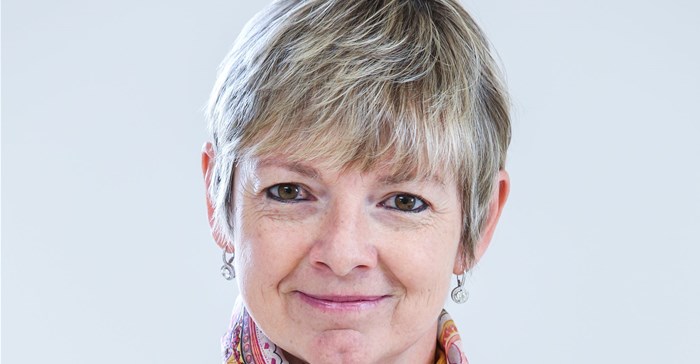South Africa’s residential property market needs the right political and economic conditions to fulfil its potential – and the low interest rates of 2021 provided a glimpse of just how the market could perform.

Source: Supplied. Hayley Ivins-Downes, head of digital at Lightstone.
But a raft of challenges, including rising interest rates, load shedding, poor service delivery, spiralling municipal rates and taxes, political uncertainty and a tough economy have forced consumers to tighten their belts – negatively affecting the property market, which has been drifting sideways since the 2008 global financial crash.
SA’s residential property market activity has been trading around 350k sales per year since the crash – well down from nearly 600k sales in 2003/4.
Other 2023 trends, which will continue in 2024, include the increasingly late entry of first-time buyers into the market, the rise of distressed sales, continued semigration out of Gauteng and the growing popularity of the Western Cape, the ongoing growth in popularity of estates and sectional schemes, an increase in bank loans and the opportunity in the affordable market where sales are sluggish.
Sales volumes are drifting but there is significant growth potential: The data suggests there is significant upside potential in the market, and the historically low interest-rate environment introduced during Covid in 2021 provided evidence, particularly in the higher end of the market.The larger gain in higher valued bonds and properties during the low-interest cycle resulted in the average value of property transactions last year top R1m on average.
While volumes have been relatively consistent since 2008, albeit at lower levels, the value of transactions has been a different story. There was a steep increase between 2001 and 2007 to R200bn and this fell to just more than R100bn in 2008/9 before recovering to hit R350bn in 2022.
The market at a glance: South Africa’s three powerhouse provinces – Gauteng, KwaZulu Natal and the Western Cape – make up 80% of the country’s residential property market value, and nearly 66% of the volume. Some 6.9 million (84%) of South Africa’s 8.4m properties are classified as residential and valued at R6tn, using Lightstone’s AVM which values each property individually.While estates make up 6.7% of residential property volumes, they account for 18.7% of value, and sectional schemes now account for nearly 13% of volumes and 15% of value.
Nearly one third of all stock is actively bonded, accounting for just more than 47% (R3.3tn) of the market’s R6.9tn value.
Bond activity up, sweet spot in high value and luxury markets: While there is a perception that banks’ reluctance to grant home loans was contributing to a less active market, the more accurate narrative is that around 50% of transactions are usually bonded and this picked up to 60% during the last year.While the high value and luxury segments were the sweet spots for banking products, the relatively low bond penetration in the low-end, affordable market presents a significant opportunity for both estate agencies and financial institutions – when political and economic circumstances stabilise.
First-time buyers entering the market later than ever: First-time homeowners are entering the market later than ever – and staying put for many years. Changing lifestyle priorities and tough economic conditions are probably the major drivers behind many delaying property purchases, and this is helping keep house-price inflation down and pushing rentals up.An analysis of data by Lightstone shows that 68% (just more than 4 million) of the 5.9 million residential properties registered at the Deeds Office are owned by first-time owners, and this includes first-time buyers and recipients of RDP/subsidised houses.
Even when we exclude all properties valued under R400k (current value, not purchase price) to adjust for RDP housing/subsidised housing, first-time owners still account for 59% of stock. This sees just 20% of stock valued under R400k owned by first-time owners who took ownership within the last 10 years, whereas 40% of those with properties valued above R800k bought within the last 10 years.
It's also become evident how property homeowners in the lower-value bands hold on to their homes for longer – and this is particularly true of those in homes valued at under R400k.
Semigration: The Western Cape continues to benefit from semigration, while Gauteng is losing out. This trend has been evident for some time and gained momentum during and after Covid as the attraction of remote working gained traction. “Crime and grime” also pushed ratepayers to seek out better-run towns that suited their changing lifestyle preferences.Lightstone’s assessment of the proportion of sales between R100k and R20m in 2019 and 2023 shows that the Western Cape’s share has jumped from 23% to 27%, while Gauteng has slipped from 43% to 39%.
Interestingly, smaller towns are getting a larger proportion of the sales than they did pre-2019. All in all, there was a relative increase in sales activity in 170 towns across the country, with 77 (45%) in the Western Cape, 22 (13%) in KwaZulu-Natal and 20 (12%) in the Eastern Cape. Gauteng was last in the provincial table with just three (2%) of towns showing a relative increase in activity.
Effect on pricing: While the residential property market initially looked like it was set for a rapid recovery, price increases normalised and have never reached double-digit growth again. House-price inflation is currently at 3.5%, which is well up on Lightstone’s low forecast of 0.9% and better than the mid forecast of 2.3%, but just short of the high forecast of 3.7%.By province, house prices have remained steady in Limpopo, increased in Mpumalanga, North West and the Western Cape.
House prices have risen in the Northern Cape, Mpumalanga and Eastern Cape, while the Western Cape has levelled out after strong growth between 2020 and 2022. House-price inflation has fallen in the Free State, Gauteng, KwaZulu-Natal and the Northern Cape.
House-price performance across all four value bands has dropped off in the past year. Low value has dropped to just under 10%, and mid value is just above 4%. But it is the luxury market which is concerning as it is usually a leading indicator for what to expect with house-price growth in the high- and mid-value segments.
The road ahead: If we take a snapshot of house-price performance in South Africa since 2000: we see a steady climb to 2008, and then the crash and a recovery that hasn’t quite made it.But given all the trends and variables outlined in this review, the market has the potential to grow significantly in the future. Hopefully, the 2024 election will help provide the political- and economic certainty that everyone needs to focus on growth.







































